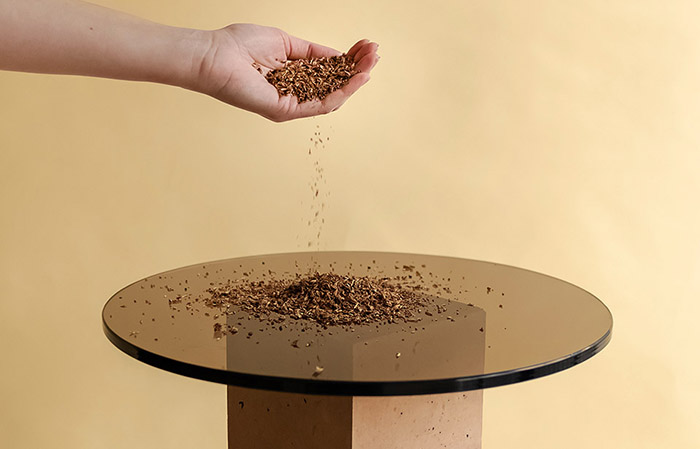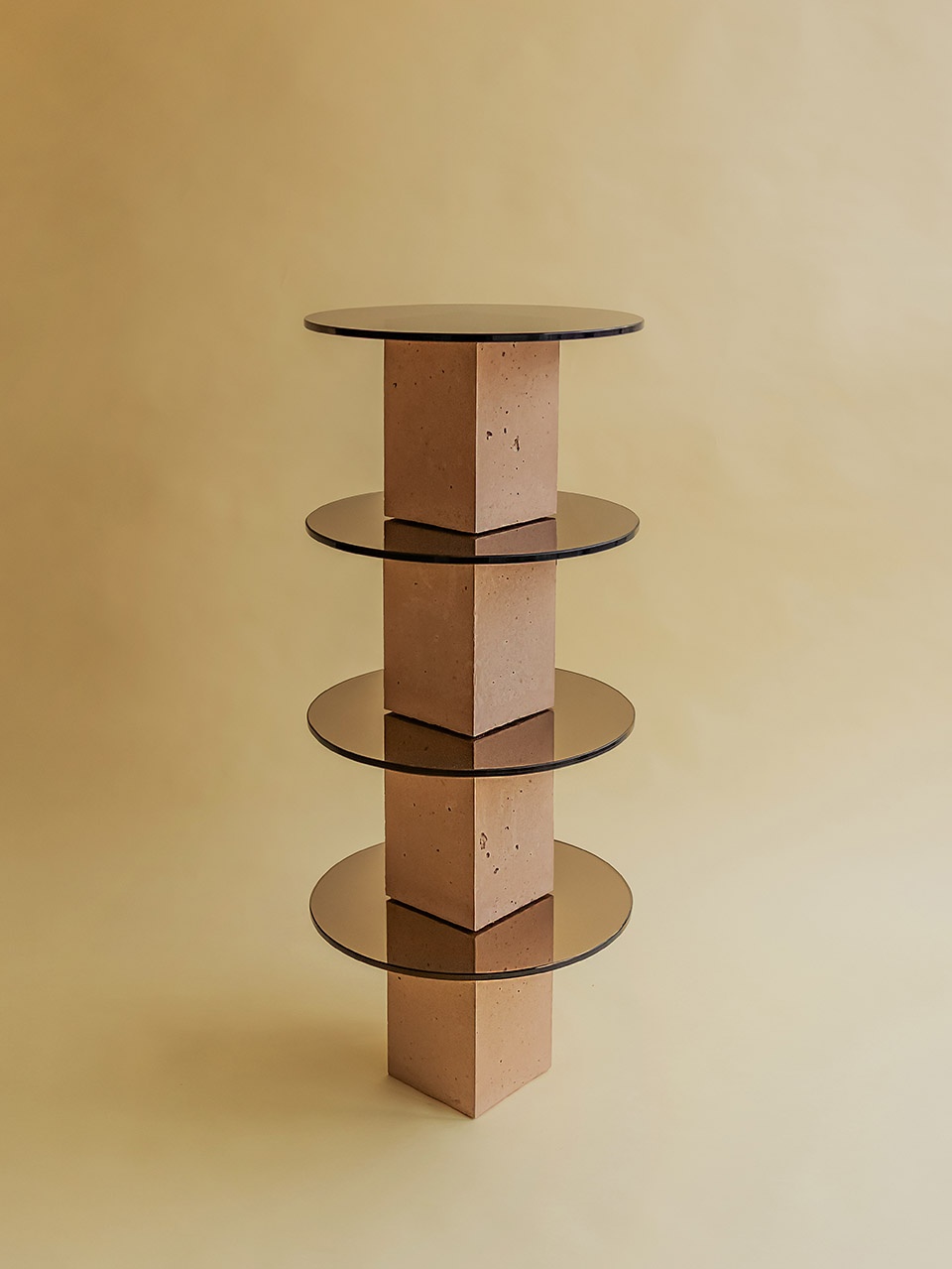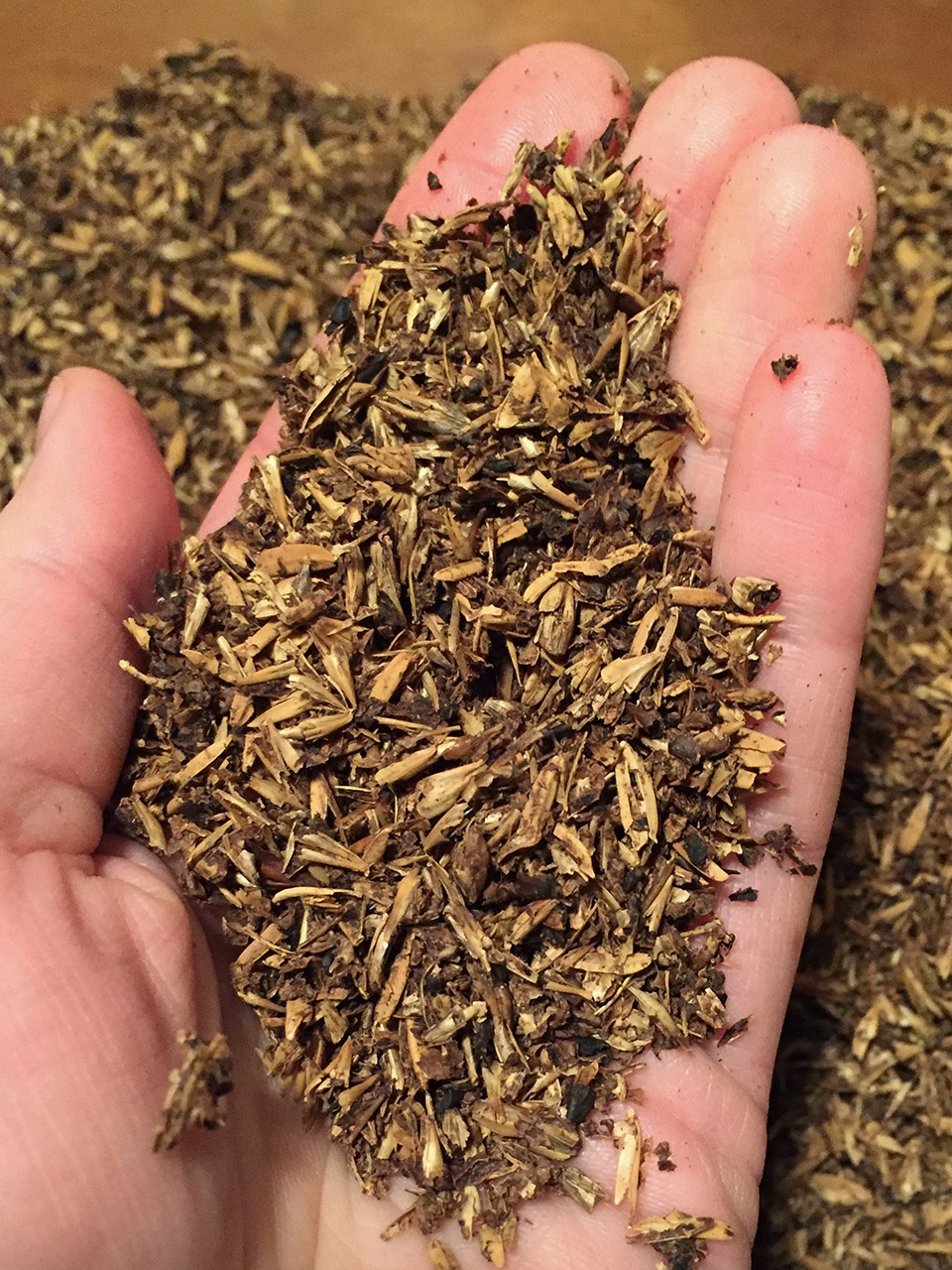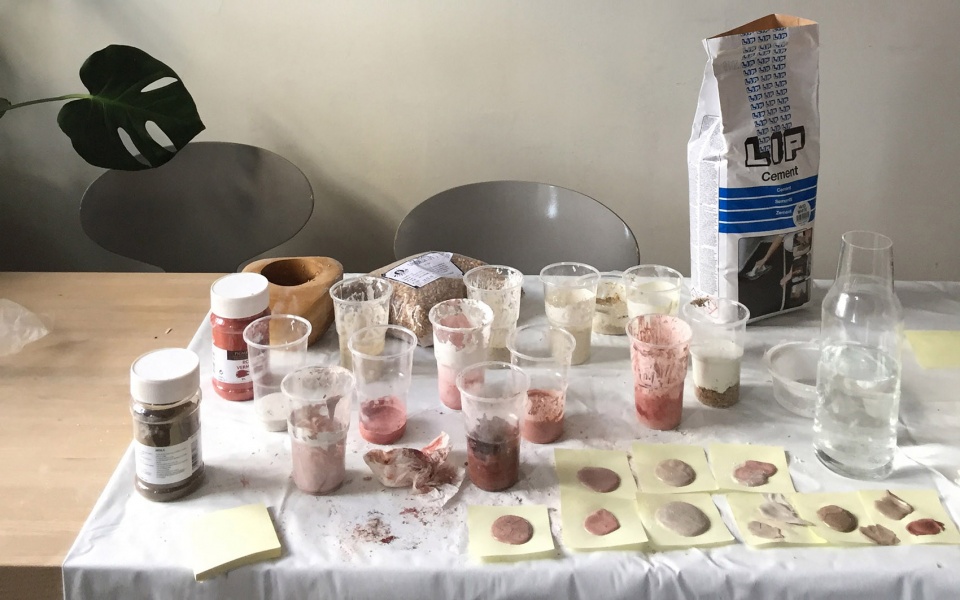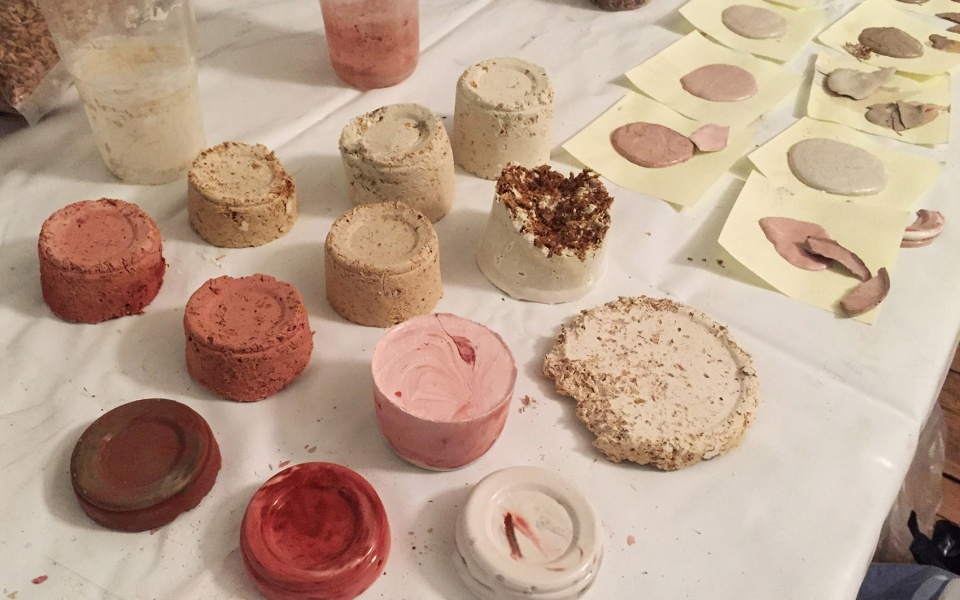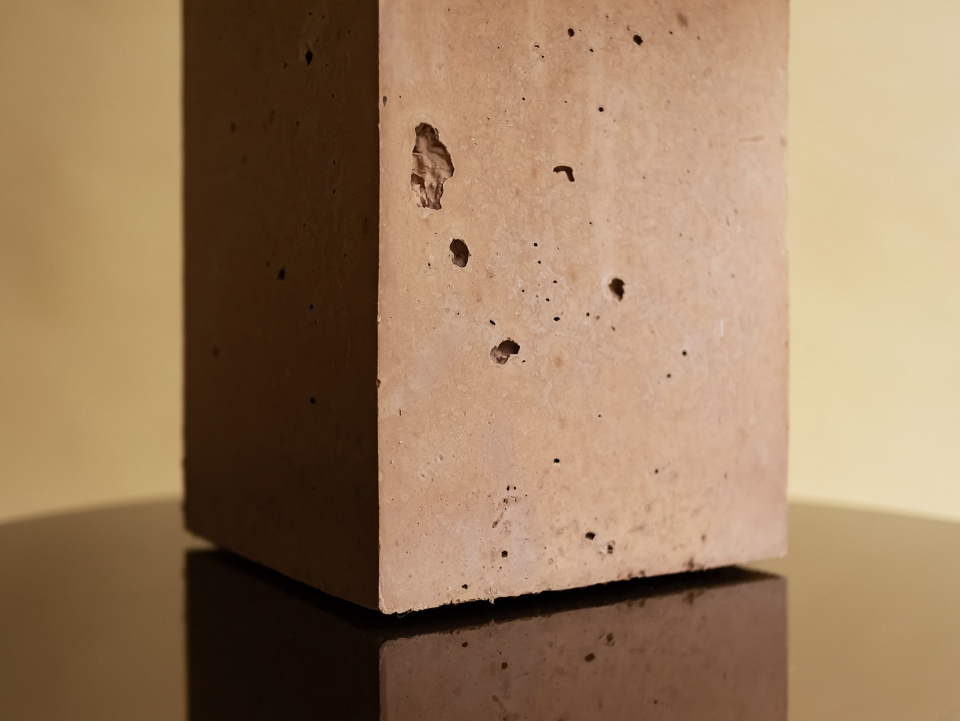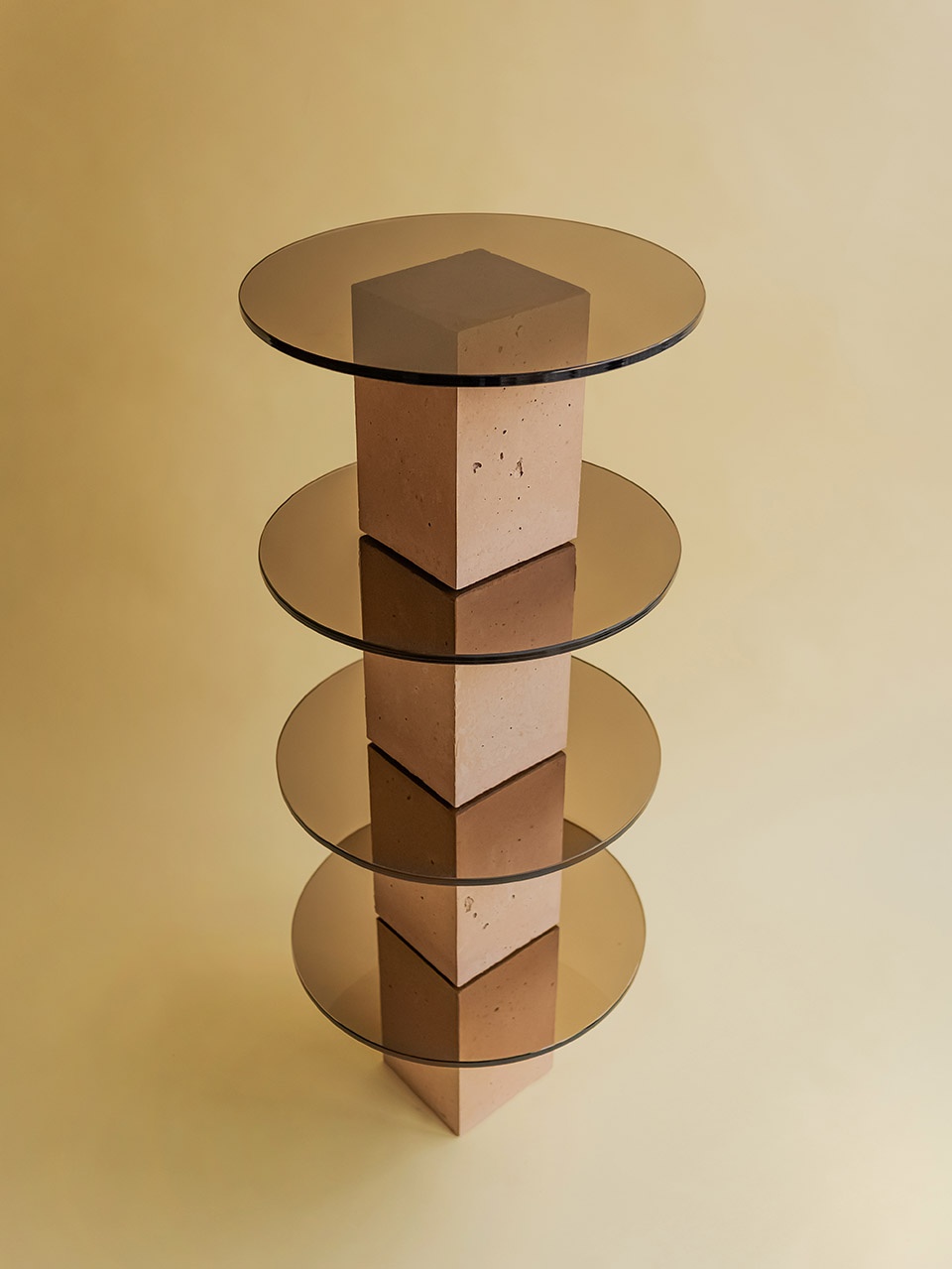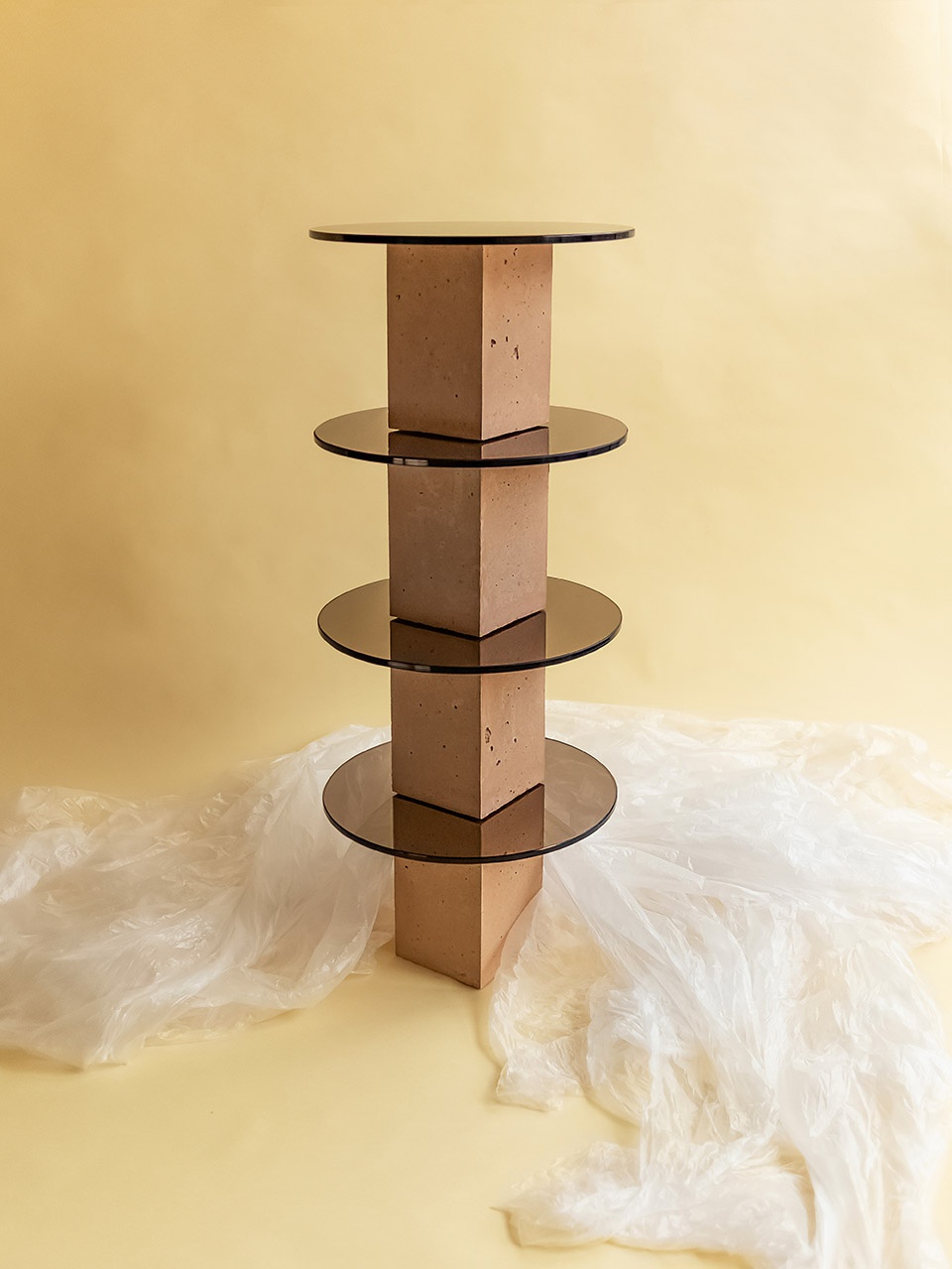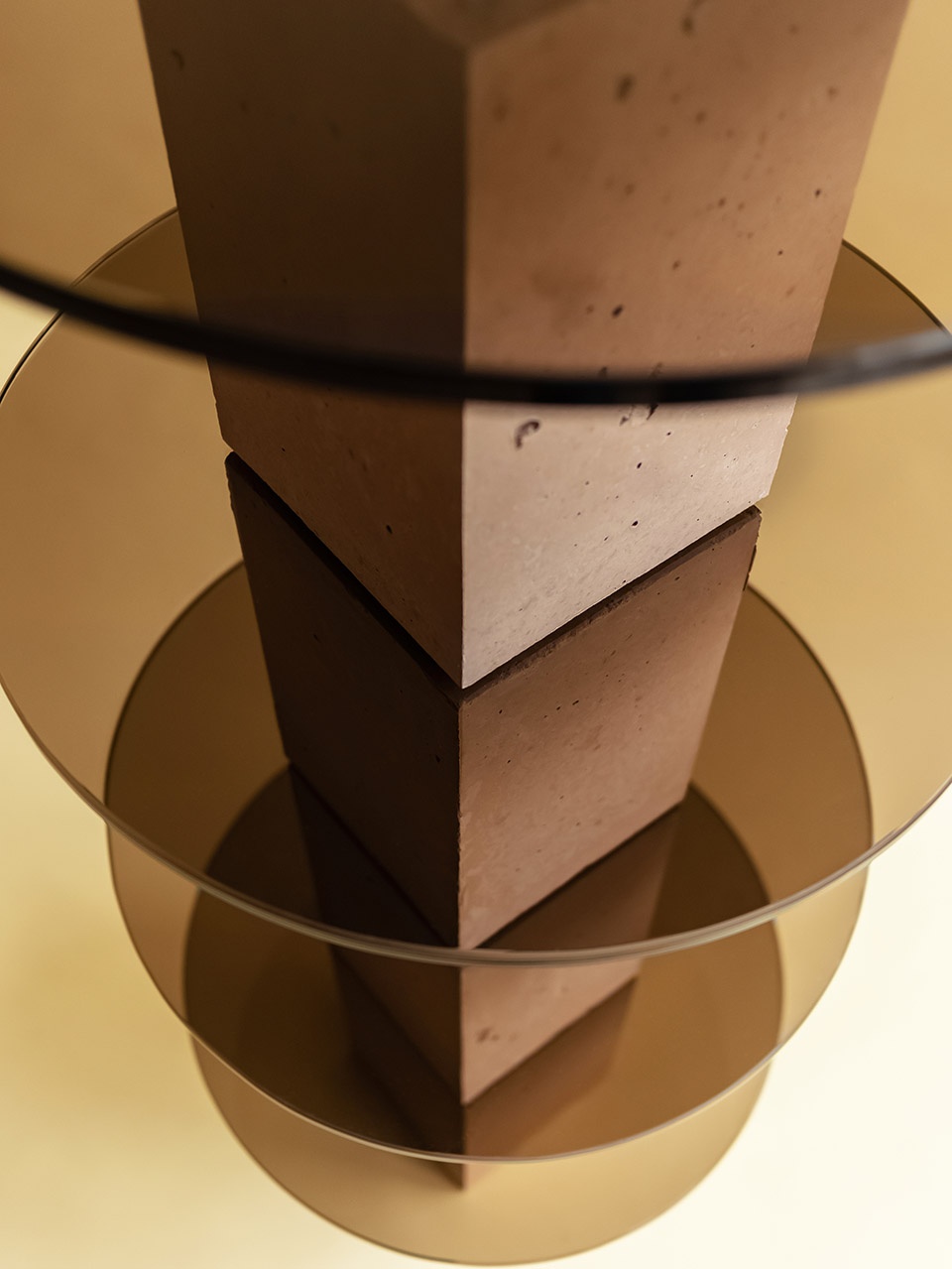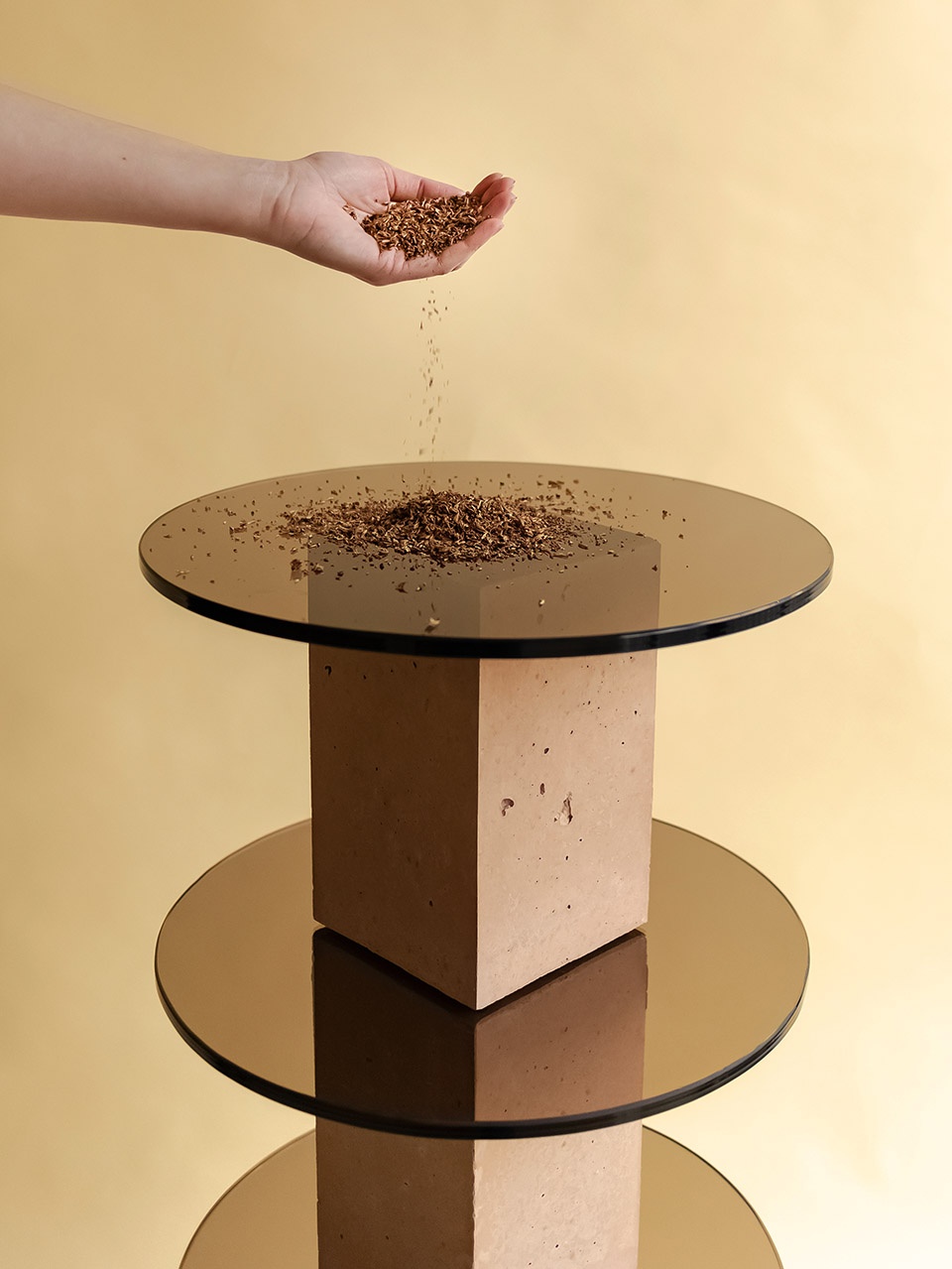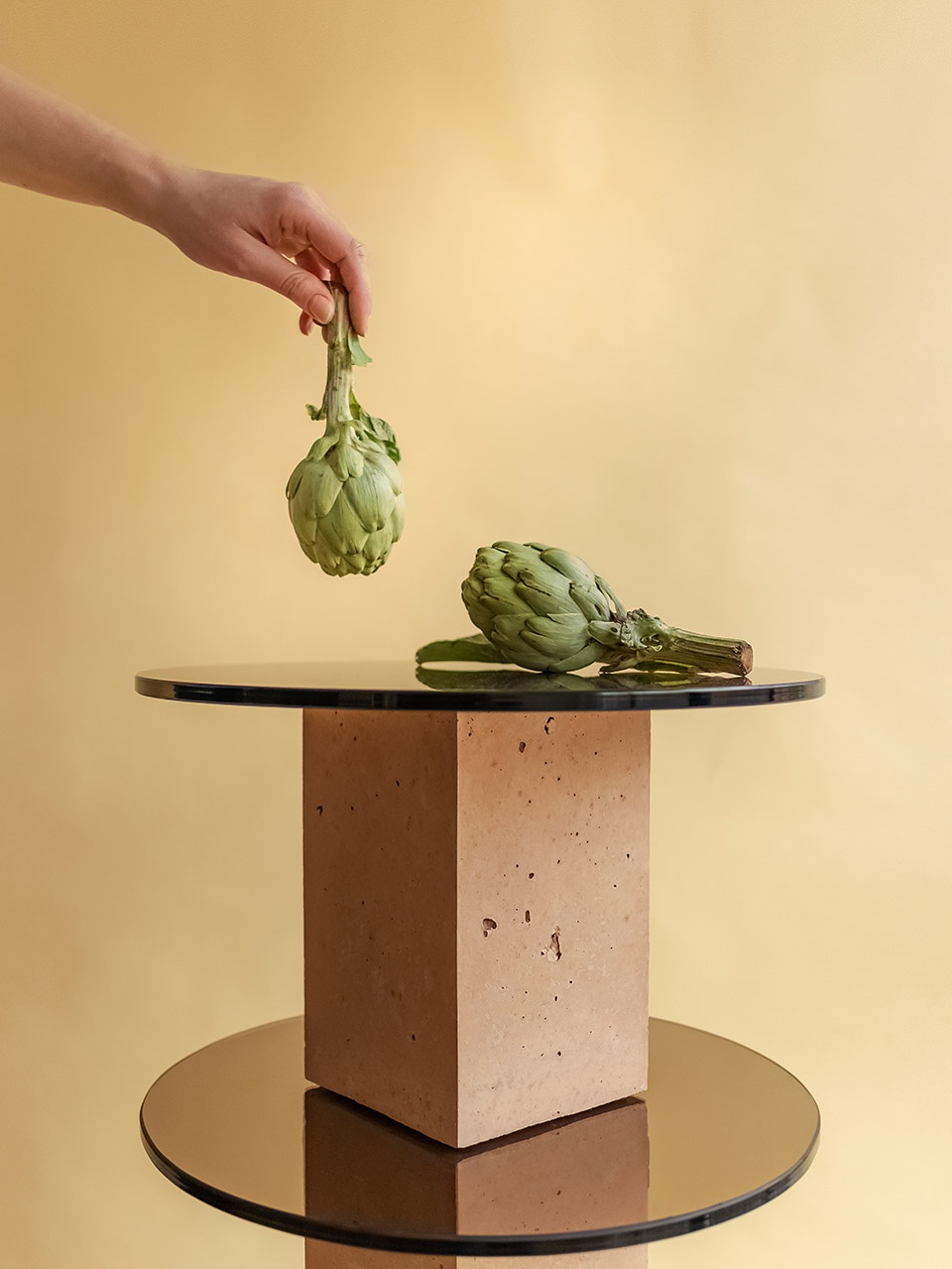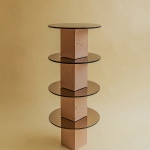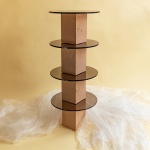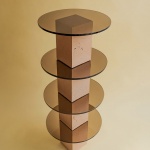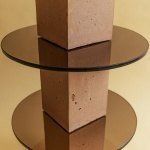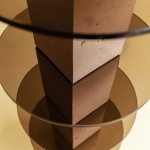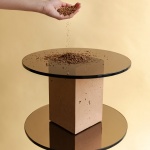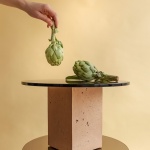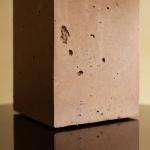感谢 Omayra Maymó 予gooood分享以下内容。更多关于她,请至:Omayra Maymó on gooood
Appreciations towards Omayra Maymó for providing the following description:
Heineken委托设计师设计了“Malta”。客户要求设计师设计一件与公司相关的作品,并给与了绝对的创作自由。经过三个月的研究和实验,设计师创作了这款概念性产品,将啤酒品牌在生产和销售产品时为减少二氧化碳排放所做的努力用实际材料呈现了出来。
‘Malta I’ was commissioned by Heineken. Giving me total creative freedom, the company asked me to develop a piece for them that had a relation with the firm. Following three months of research and experimentation, I designed and built this conceptual piece that embodies a statement on the use of resources and is based on the brewery’s relevant efforts to reduce their CO2 emissions during their beer production and distribution chain.
▼产品外观,product appearance ©Alberto Santomé
“Malta I”是一款置物台,主要由啤酒生产过程中废弃的大麦制成。在结束增加啤酒口味的使命后,大麦麦芽被生产者从酒液中移除,成为一种副产物。在“Malta I”中,这种废物在新的功能中获得新生。设计师将麦芽与水泥混合,形成了一种无机-有机的复合物,比普通的水泥更加轻便强韧。
‘Malta I’ is a pedestal (plinth/column/totem/altar) made with barley waste from the beer brewing process as its main component. After having brought the flavour to the drink, the barley malt is then removed from the liquid, becoming a residue. In ‘Malta I’ this waste is given a new life and function. The waste is bound with cement, generating an inorganic-organic composite, lighter and with better capacities than normal cement.
▼复合物生产过程,process of producing the composite of barley and cement ©Omayra Maymó
自古以来,有许多关于将有机元素如大麻、米壳等混合到建筑材料中的研究,如古代中国,会用大米来提高砂浆的品质。除了可以改善材料的隔热性和强度,这样的配方还可以减少传统水泥工业中大量的二氧化碳排放。
In the same way as rice has been traditionally used in ancient China to improve the quality of their mortars, the benefits of using organic elements such as hemp or rice husks in construction materials are being widely studied. Among other improvements such as higher thermal insulation and strength, these new formulas help reduce the large carbon emission produced by traditional cement manufacturing.
▼最终生产出的无机-有机复合物砖块,block composed of inorganic-organic composite ©Alberto Santomé
最终的成果中,由大麦-水泥复合物制作的模块化砖块可以组合形成不同的结构外观。“Malta I”这个名字便体现了产品组合的无限可能。复合物砖块之间由青铜色玻璃连接,在视觉上形成沉重与轻盈的对比。材料的物质性与元素之间的对比让产品显得更为随意和复杂。
The outcome, a set of modular blocks made with this barley-cement composite, can be used to create multiple configurations. Thus, the work is called ‘Malta I’ as an infinite number of different Malta arrangements could potentially be created. In this case, the composite blocks are combined with layers of bronze glass to form a stacked pedestal, seeking a contrast between the visual heaviness of the blocks and the optical lightness of the glass sheets. The result is a composition in which the formal simplicity hands over the prominence to the materiality and contrast between the elements.
▼置物台由砖块模块和青铜玻璃组成
the pedestal is a combination of modular blocks and bronze glass
©Alberto Santomé
▼砖块与玻璃在材质上形成对比
contrast between the materials of blocks and glass
©Alberto Santomé
▼置物台的使用,有机与无机的对比
use of the pedestal, contrast between inorganic and organic
©Alberto Santomé
Client: Heineken
Design: Omayra Maymó
Photograph: Alberto Santomé
